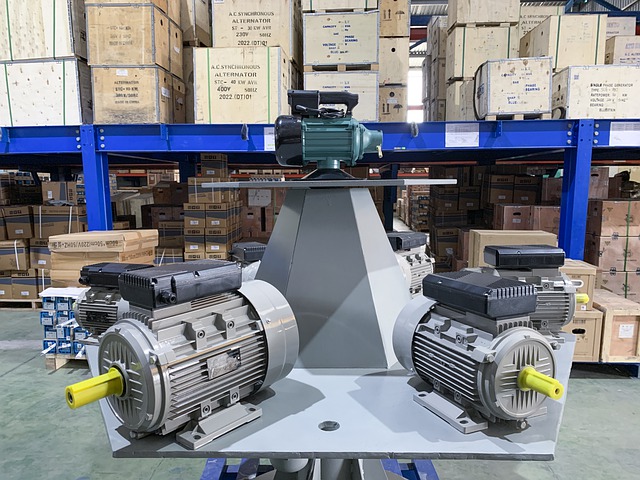Permanent magnet motors save the use of reactive excitation current, unlike induction motors. This is a plus in its efficiency since the motor does not have to use energy to provide a magnetic field.
The power factor of the permanent magnet motors is improved due to the elimination of reactive excitation current. The implication is that more electrical input power can be converted to mechanical power by the motor, which is a measure of higher efficiency.
Because permanent magnet motors do not have any excitation current, the stator current of permanent magnet motors is very small. Small current reduces losses in stator windings and raises the efficiency of the whole motor.
Permanent magnet motors do not have any rotor windings and hence do not exhibit any losses due to the resistance of the windings. This loss mechanism occurs in induction motors due to the flow of current through the rotor windings, but the permanent magnet motors avoid that completely.
Since permanent magnet motors are more efficient and generate less heat, the need for cooling – such as fans – reduces. This in turn reduces wind friction losses, further improving motor efficiency.
Generally, permanent magnet motors are 10 to 15 percentage points more efficient than comparable induction motors. This is because of the overall lower losses in the design of the motor.
The permanent magnet synchronous motors have kept high efficiency and power factor within a wide range from 25% to 120% of the rated load. They are particularly effective during the light load operation as they remain efficient.

Surface-mounted magnets are mounted on the outer surface of the rotor. The construction is simple and inexpensive; however, it may have a lower efficiency at a high speed due to high centrifugal forces.
Built-in or interior permanent magnets are embedded inside the rotor. The built-in type has better mechanical integrity and can work with higher speeds more efficiently.
For radial structures, the magnetic flux is directed from the rotor to the stator in a radial manner. This represents perhaps the most common and rather simple configuration.
Tangential structures will direct the magnetic flux tangentially. With this, there is the possibility of a greater excitation area, hence the suitability for multi-pole motors requiring high torque.
Hybrid structures combine features of radial and tangential designs to optimize performance for specific applications. These are less common due to their complexity.
A multi-pole structure is used to lower the rated synchronous speed by increasing the number of poles. This helps in achieving high torque at low speeds, which is beneficial for direct drive applications.
The design of the motor, together with an appropriate number of poles and magnet arrangements, should be optimized for each application to ensure high torque at low speeds can be achieved without excessive inverter currents.
The frequency of the SPWM inverter output should be well above 25 Hz, typically, to yield a reasonable linear adjustment range in the drive system.
The rated synchronous speed of the motor should be low because the inverter output characteristic needs to match the characteristic of the motor, by which a high inverter current is not required and which minimizes the system costs and losses.
A permanent magnet should provide high enough magnetic field strength. Magnet size and its arrangement are optimized to satisfy torque requirements.
This structure is particularly fit for multi-pole motors because the tangential structure can offer each pole a larger excitation area for providing the strong magnetic fields necessary in high torque output.
For the selection of pole-slot matching, in the case of the application of fractional slot windings, the number of slots per pole per phase Q should be less than 1. It provides some advantages in motor performance.
Fractional slot windings reduce cogging torque amplitude, reducing torque pulsations and providing higher motor smoothness.
By reducing cogging torque, fractional slot windings increase the speed regulation accuracy, hence making the motor operation more precise.
The smoothness of operation due to fractional slot windings results in lower vibration and noise levels, hence a quieter motor.
Fractional slot windings improve the distribution of the winding that acts to enhance the sinusoidal nature of the motor’s induced back electromotive force, EMF.
A smoother sinusoidal back EMF will contribute to the overall motor performance in terms of less harmonic distortion and smoothness in operation.
Employing reduced-sized slots in the stator increases the utilization area effectively, thus enabling the efficient use of the stator material.
The coil end length is reduced in the case of fractional slot windings, which decreases copper consumption and reduces resistive losses.
The motor pitch of 1: Every coil is wound over one tooth, making winding easier to perform and at the same time improving motor efficiency.
This design reduces the circumference and extension length of the coil, contributing to lower copper losses and improved efficiency.
The fractional slot windings contribute to a reduction in copper losses since the length of the winding is minimized and less copper is used, thereby enhancing overall motor efficiency.
This makes fractional slot windings cheaper to produce than integral slot windings while the motor is operational with better efficiency.
ENNENG is one of the major manufacturers of Permanent Magnet Direct Drive Motor in the world market.
ENNENG specializes in developing and manufacturing Permanent Magnet Direct Drive Motors. Permanent magnet rotors, these motors have been widely used in several fields, including gold mines, coal mines, tire factories, oil wells, and water treatment plants. Permanent Magnet Direct Drive Motor advantages are that they have canceled the reducer in traditional motor systems. The advantages are very low mechanical noise, small vibration, and low failure rate. Those have a high-efficiency motor of 93-97% with up to 0.99 power factor for energy savings and increasing active power within the system. Compared with traditional motors with speed reducers, Permanent Magnet Direct Drive Motors have higher transmission efficiency while requiring less maintenance. Owing to their compact design and reliable performance, the motors are ideal for low-speed and high-power application areas.